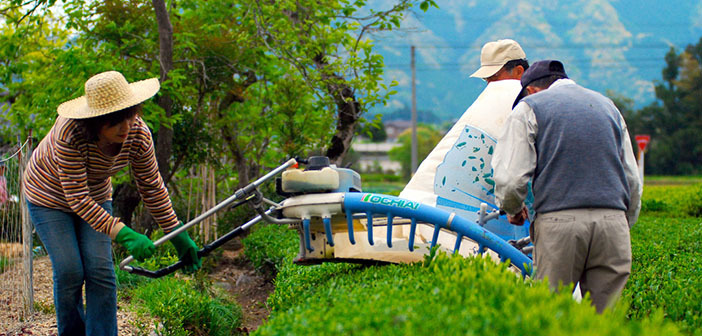With the huge variety of teas available today, it’s surprising to some that all tea is actually made from the same evergreen shrub- Camellia Sinesis. The differences between the five major types- black, oolong, white, green and pu-ehr is in the way the leaves are processed.
The majority of tea the world drinks is black tea. In black tea production, the first step after harvesting the tea leaves is withering or drying. This is generally done on racks. The withering process allows for oxidation of the many compounds found in tea. Some of this is due to bacterial action, some is due to the release of enzymes present inside the tea leaves. Oolong tea is sometimes referred to as partially fermented tea; it undergoes a shorter withering period than black tea.
Green tea however is unwilted and unoxidized. It undergoes no withering period, but is instead immediately steamed, at temperatures over 160 degrees F. This serves to inactivate native enzymes and kill bacteria; thus, no fermentation occurs. While green tea lacks the fermentation products that give black tea a richer taste, it does contain a much higher amount of polyphenols. Polyphenols are compounds that are coming under increasing medical study; they are thought to account for most of the beneficial properties that are ascribed to green tea consumption. The tea leaves are rolled and repeatedly fired, until they are crisp. The tea remains green in color and is packed with under 3% residual moisture. The low moisture content is essential to prevent spoilage or fermentation of the finished product.
While over 50 countries grow at least some tea, the bulk of the world’s tea is imported from China, India, Kenya and Sri Lanka. Most green tea comes from China or Japan. Although green tea accounted for only 15% of the tea sold in the United States in 2012, its percentage is rising steadily.
Two of the most common forms of Chinese green tea are China Gunpowder and Young Hyson. They are both made from the same tea leaves, but while Young Hyson is formed into twisted leaf, China Gunpowder is rolled into tiny balls. Two of the most popular Japanese green teas are Gyokura, which is shaded during the last weeks of its growing period to increase chlorophyll production and Sencha, which is exposed to direct sunlight.
Image by Oli Studholme. It’s been cropped from the original. – Usage license – CC BY 2.0




